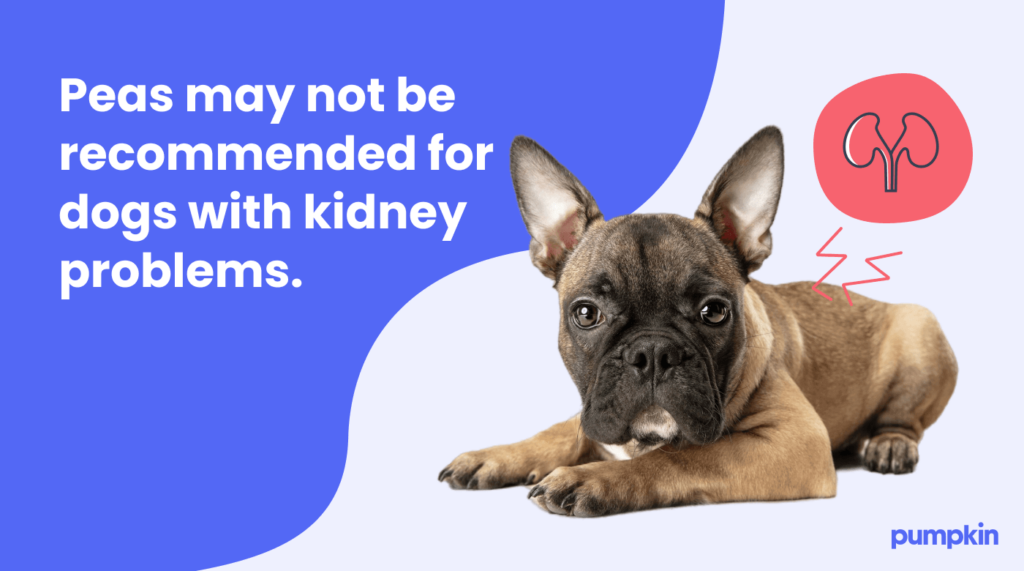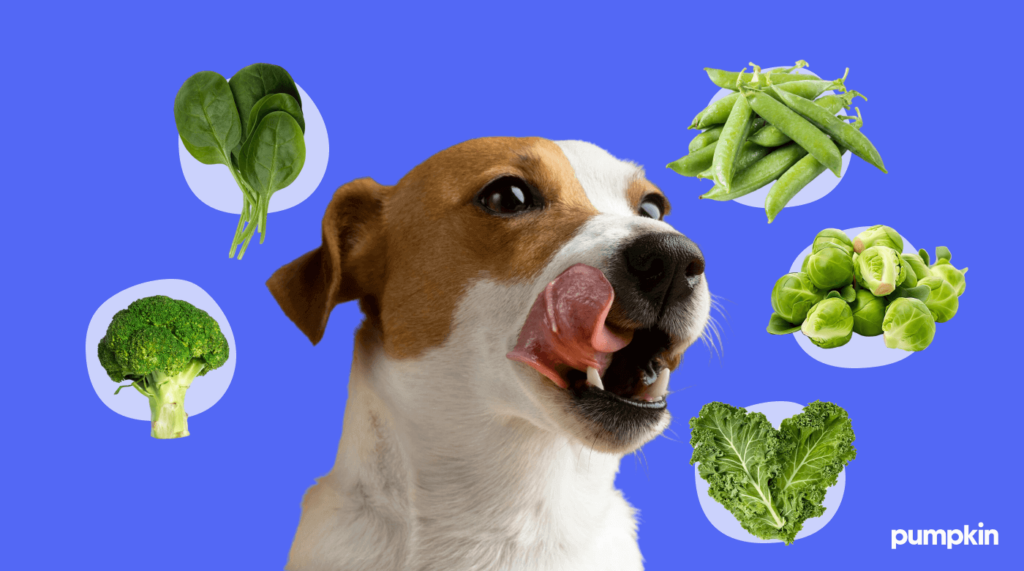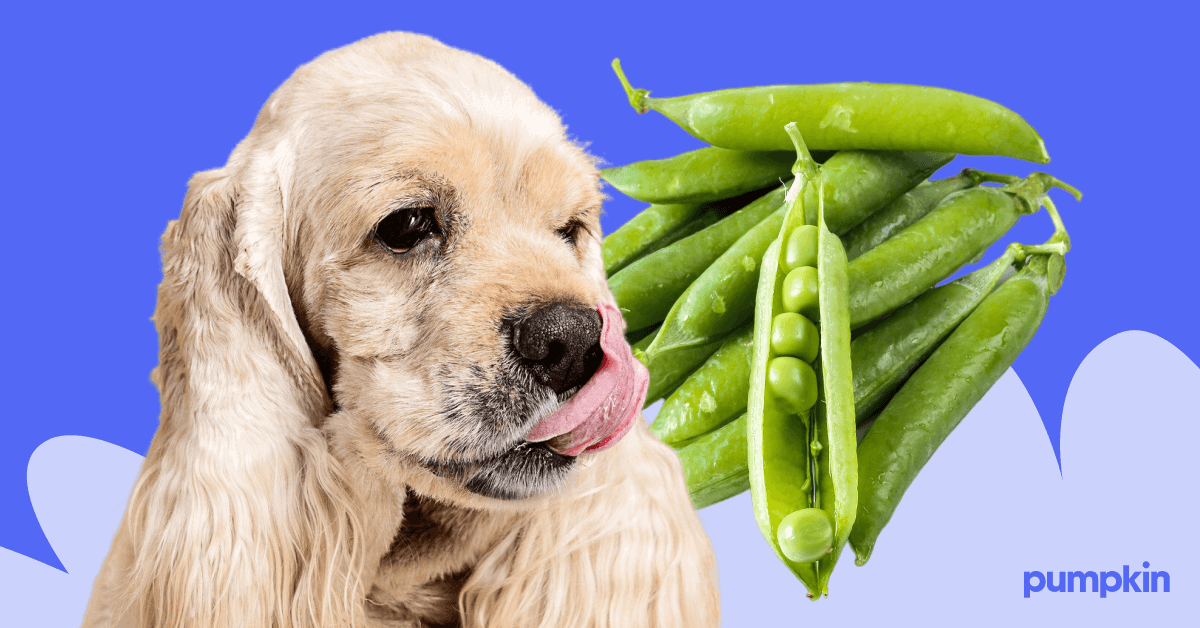Key Points
- Yes, dogs can eat peas, but moderation is key.
- Peas are an excellent source of vitamins, minerals, and fiber for dogs.
- Always introduce new foods like peas slowly to monitor for allergies or digestive issues.
If your dog could talk, you might hear them say, “Can you pass the peas, please?” Of course, they would say that about everything, including your dirty socks.
Fortunately, you don’t have to say no to your four-legged friend in this case. When served in moderation, these little green gems are a healthy, low-calorie treat for our pets. In large amounts, these veggies do carry risks for dogs.
Keep reading to learn how to keep your dog healthy and happy when adding these greens to their diet.
Are peas safe for dogs?
Absolutely! Peas can be a safe and nutritious addition to your dog’s diet. You can share your favorite varieties with your pet, including garden peas, snow peas, and sugar snap peas.
Peas belong to the legume family, along with lentils, chickpeas, and beans. They’re packed with essential vitamins, minerals, and protein. However, like any human food, you should do some research before sharing new treats, even healthy ones.
If you want to give your dog peas, make sure they’re served plain and free from any additives or seasonings. For example, canned peas are a no-no because they usually come with high levels of sodium, and buttered peas are too rich in fat.
Can puppies eat peas, too?
Yes, puppies can have peas, but young dogs do have very specific dietary requirements. For example, puppy food isn’t recommended until around 8-12 weeks of age.
Large peas like sugar snap peas can also be a choking hazard. Steam these veggies before serving and consider mashing them with other vegetables, water, or kibble to reduce the risk.
Not sure if peas are right for your pet? Speak to your vet or breeder before changing your pup’s diet.
What are the nutritional benefits of peas?
Peas are rich in vitamins and nutrients, including vitamins A, K, and B. They also have iron and magnesium.
These tiny greens can support your dog’s:
- Vision
- Heart and muscles
- Skin and hair
- Immune system
Peas are also a great source of fiber and support the canine digestive system for healthy and regular bowel movements. And because they’re low in calories, peas can help your dog maintain a healthy weight.
Despite all of these benefits, peas should only be a “sometimes” food for pups, as with all human foods.
Risks and considerations when feeding peas to your dog
While peas are generally safe, overfeeding can lead to digestive issues, such as bloating, flatulence, constipation, or vomiting.
If your dog has kidney problems, your vet may recommend giving them a pea-free diet. Peas contain purines, which can lead to kidney stones.

You should also be aware of food allergies in dogs, though they are rare. Symptoms of an allergic reaction can include:
- Itching
- Swelling and skin inflammation
- Digestive discomfort
- Vomiting or diarrhea
- Respiratory issues
If you notice any adverse reactions, check in with your vet.
Pea-based diets and heart disease
In the past, some research suggested that grain-free diets with large amounts of peas and other legumes may contribute to canine heart disease. At this time, the U.S. Food and Drug Administration does not believe these reports supply sufficient data to establish a causal relationship between heart disease and grain-free diets. The issue is no longer under investigation by the FDA. Still, as with all big diet changes, talk to your vet before switching to grain-free dog food that uses legumes or a diet high in peas.
How to safely introduce peas to your dog
Start by offering a small amount of peas, either fresh or thawed from frozen. You can feed them directly to your dog by hand or use them as a food topper.
Over time, you can increase the quantity if your dog enjoys them and shows no adverse reactions. Smaller dogs need fewer daily calories so stick to a small-sized spoonful of peas. Larger breeds can handle a larger spoon-sized portion.
Here are a few creative ways to serve peas to your dog:
- Mix cooked green peas with your dog’s regular pet food
- Offer your dog plain peas as healthy dog treats
- Puree or mash peas with other healthy, dog-safe vegetables
- Steam peas and combine with brown rice, turkey, and broccoli for a healthy homemade meal
- Cook and mash peas and add to your dog’s kibble
Never feed your dog peas with seasonings or salt. Also avoid toxic vegetables such as onions and garlic.
What other green vegetables can dogs eat?
Along with peas, dogs can safely consume other green vegetables in small quantities. Here are some options you can share with your pup:
Broccoli
Broccoli is best served steamed, but you can also boil, puree, or bake it. These mini-trees are loaded with fiber, plus vitamins C and K.
Remove the stalk and cut it into small pieces to reduce the risk of choking.
Spinach
Spinach makes you strong (just ask Popeye), and can be safe for dogs in moderation. It’s rich in iron as well as vitamins A, B, C, and K.
There are a few risks that come with spinach, so check with your vet before serving.

Green beans
Green beans are a low-calorie treat that comes from the same family as peas. Serve steamed or raw, but make sure you chop them up into bite-sized pieces.
After eating green beans, dogs can reap the benefits of fiber, antioxidants, water, and vitamins K and B6.
Brussel sprouts
Brussels sprouts are an acquired taste, for humans and dogs, but if you love them, try sharing them with your dog. They have a range of nutrients, including vitamins K, C, and A, potassium, and folate.
Wash, cook, and chop before serving. Brussels sprouts can cause gas and digestive issues, so give sparingly.
The verdict: Can dogs have peas?
In moderation, peas are a nutritious snack for your dog. Peas offer numerous health benefits and have vitamins, minerals, fiber, and plant-based protein. But like all foods, these veggies should be introduced slowly to avoid digestive issues. Lastly, because pea-based dog foods have been linked to heart disease, talk to your vet before making it a staple in their diet.
Don’t forget, dogs may have a bad reaction when trying something new. And as a pet parent, it’s your job to intervene when they need help. When the unexpected happens, Pumpkin pet insurance plans can help protect your dog and your budget.
Updated on January 29, 2025: This article was updated with additional information on a potential link between canine heart disease and grain-free diets with lots of peas. The FDA found insufficient evidence for this claim and is no longer investigating the issue, and so we’ve updated this article accordingly.
- https://www.healthline.com/nutrition/green-peas-are-healthy
- https://www.fs.usda.gov/wildflowers/ethnobotany/food/legumes.shtml
- https://www.nbcnews.com/health/health-news/fda-pet-food-dogs-diet-heart-disease-rcna101224
- https://www.animalmedicalcenterofchicago.com/dog-diet-calorie-requirements-for-dogs/
- https://www.healthline.com/nutrition/foods-high-in-sodium
- https://www.fda.gov/animal-veterinary/outbreaks-and-advisories/fda-investigation-potential-link-between-certain-diets-and-canine-dilated-cardiomyopathy




